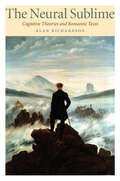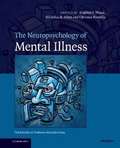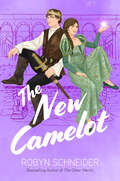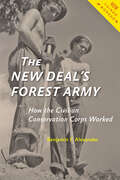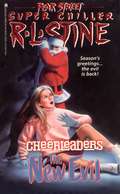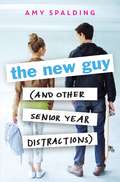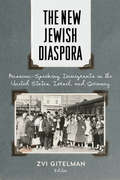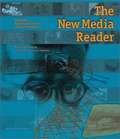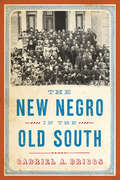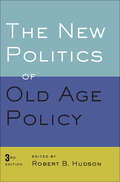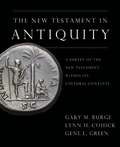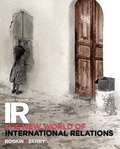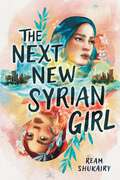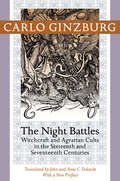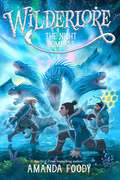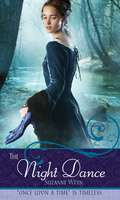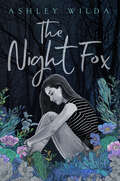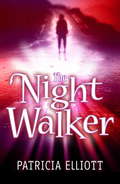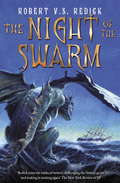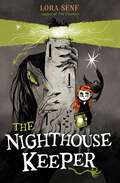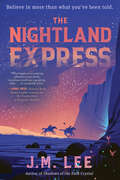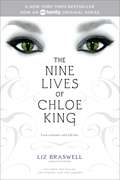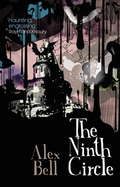- Table View
- List View
The Neural Sublime: Cognitive Theories and Romantic Texts
by Alan RichardsonWinner, 2011 Alpha Sigma Nu Book Award in Literature and Fine ArtsThe Neural Sublime brings recent work in cognitive neuroscience to bear on some famously vexed issues in British Romantic studies. In exciting and unprecedented ways, Alan Richardson demonstrates how developments in the neurosciences can transform the study of literary history. Richardson presents six exemplary studies, each exploring a different intersection of Romanticism and the sciences of the mind and brain: the experience of the sublime and the neuroscience of illusion; the Romantic imagination and visual imaging; the figure of apostrophe and linguistic theory; fictional representations of the mind and "theory of mind" theory; depictions of sibling incest and neo-Darwinian theories of mental behavior; and representations of female speech and cognitive developmental psychology. Richardson’s insightful analysis opens fresh perspectives on British Romanticism, pointing scholars to new developments in cognitive literary studies. He combines elements of new historicist analysis with original—and much-needed—models for understanding language, subjectivity, and social behavior. Far from signaling a departure from the prevalent critical approaches of new historicism, Richardson argues, cognitive theory presents an essential complement to them.The Neural Sublime features an array of cognitive and neuroscientific approaches, providing an engaging and readable introduction to the emergent field of cognitive literary studies.
The Neuropsychology of Mental Illness
by Stephen J. Wood Nicholas B. Allen Christos PantelisIt is widely accepted that most psychiatric disorders are associated with cognitive impairment and that neuropsychological approaches can help unravel the mechanisms underlying brain function and help us develop a better understanding of these disorders. In this book, a panel of the world's leading experts describe the development of neuropsychological approaches to the investigation, description, measurement and management of a wide range of mental illnesses. Part One explains the rationale for examining neuropsychological processes within clinical disorders, leading into Part Two summarizing and critiquing the methodological approaches to study. Part Three covers each of the major psychiatric disorders and provides a summary of the neuropsychological findings for each condition. The final section brings together the perspectives of neuroscientists, psychiatrists and philosophers. Essential reading for all those studying the healthy as well as the disordered brain, The Neuropsychology of Mental Illness will appeal to specialists from the fields of mental health, psychology, clinical neuroscience and philosophy.
The New Camelot (Emry Merlin #3)
by Robyn SchneiderSayeth it ain't so! The finale to the epic Emry Merlin trilogy is here, with all the sorcery, snark, and high stakes that made The Other Merlin one of Publishers Weekly&’s Best Books of the Year!Everything is finally going right for Emry Merlin. Now that Arthur is the king and her wayward magic is under control, she&’s enjoying life as Camelot&’s official court wizard—and as Arthur&’s girlfriend.But when an unexpected visitor arrives at court, Emry finds her hard-won position threatened. And Arthur is torn between listening to his advisors and following his heart. Even more troubling, war is on the horizon, with King Yurien&’s access to dark magic ensuring Camelot&’s doom. That is, unless Emry, Arthur, and Lance can find a way to defeat the evil sorceress Bellicent with magic from her own world. But undertaking a quest to Anwen is perilous business, and our young heroes will face many obstacles on their journey—from dangerous beasts to suspicious nobles to cursed maidens determined to find someone to marry.Can Emry and Arthur save their kingdom and fix their relationship, or will they have to choose between their future and Camelot&’s?
The New Deal's Forest Army: How the Civilian Conservation Corps Worked (How Things Worked)
by Benjamin F. AlexanderHow the Civilian Conservation Corps constructed, rejuvenated, and protected American forests and parks at the height of the Great Depression.Propelled by the unprecedented poverty of the Great Depression, President Franklin D. Roosevelt established an array of massive public works programs designed to provide direct relief to America’s poor and unemployed. The New Deal’s most tangible legacy may be the Civilian Conservation Corps’s network of parks, national forests, scenic roadways, and picnic shelters that still mark the country’s landscape. CCC enrollees, most of them unmarried young men, lived in camps run by the Army and worked hard for wages (most of which they had to send home to their families) to preserve America’s natural treasures. In The New Deal’s Forest Army, Benjamin F. Alexander chronicles how the corps came about, the process applicants went through to get in, and what jobs they actually did. He also explains how the camps and the work sites were run, how enrollees spent their leisure time, and how World War II brought the CCC to its end. Connecting the story of the CCC with the Roosevelt administration’s larger initiatives, Alexander describes how FDR’s policies constituted a mixed blessing for African Americans who, even while singled out for harsh treatment, benefited enough from the New Deal to become an increasingly strong part of the electorate behind the Democratic Party. The CCC was the only large-scale employment program whose existence FDR foreshadowed in speeches during the 1932 campaign—and the dearest to his heart throughout the decade that it lasted. Alexander reveals how the work itself left a lasting imprint on the country’s terrain as the enrollees planted trees, fought forest fires, landscaped public parks, restored historic battlegrounds, and constructed dams and terraces to prevent floods. A uniquely detailed exploration of life in the CCC, The New Deal’s Forest Army compellingly demonstrates how one New Deal program changed America and gave birth to both contemporary forestry and the modern environmental movement.
The New Evil (Fear Street Cheerleaders)
by R.L. StineCorky and the Shadyside cheerleaders are sure that the evil spirit is destroyed. The terror is over. Then Hannah is mysteriously thrown through the car window. And Naomi is nearly burned to death. One horrifying accident after another. And now Corky can no longer keep her greatest fear to herself—the evil is back! But where is it? Corky, Kimmy, and Debra aren’t waiting to find out. They have a plan to draw the evil out and destroy it for good. Unless, of course, the evil destroys them first...
The New Guy (and Other Senior Year Distractions)
by Amy SpaldingFilled with romance, rivalry, and passive-aggressive dog walking, Amy Spalding delivers a hilariously relatable story about how even the best-laid plans sometimes need to be rewritten.What's the only thing that could derail overachiever Jules's perfect senior year? Alex Powell--former member of boy-band sensation Chaos 4 All and newest transfer to Eagle Vista Academy. Alex seems cool enough when he starts spending time with Jules. In fact, he turns out to be quite the romantic (not to mention a killer kisser). And after getting over the initial shock that someone like Alex might actually like like her, Jules accepts that having a boyfriend could be a nice addition to her packed schedule. That is, until Alex commits the ultimate betrayal, which threatens to ruin her high school career, and possibly her entire future. This. Means. War.
The New Jewish Diaspora: Russian-Speaking Immigrants in the United States, Israel, and Germany
by Zvi Gitelman Mikhail Krutikov Stephanie Sandler Anna Shternshis Sveta Roberman Uzi Rebhun Jonathan Dekel-Chen Adrian Wanner Nelly Elias Steven J. Gold Mark Tolts Hannah Pollin-Galay Julia Lerner Marina Sapritsky Elena Nosenko-Shtein Olena Bagno-Moldavski Eliezer Ben-Rafael Gur Ofer Yaacov Ro'IIn 1900 over five million Jews lived in the Russian empire; today, there are four times as many Russian-speaking Jews residing outside the former Soviet Union than there are in that region. The New Jewish Diaspora is the first English-language study of the Russian-speaking Jewish diaspora. This migration has made deep marks on the social, cultural, and political terrain of many countries, in particular the United States, Israel, and Germany. The contributors examine the varied ways these immigrants have adapted to new environments, while identifying the common cultural bonds that continue to unite them. Assembling an international array of experts on the Soviet and post-Soviet Jewish diaspora, the book makes room for a wide range of scholarly approaches, allowing readers to appreciate the significance of this migration from many different angles. Some chapters offer data-driven analyses that seek to quantify the impact Russian-speaking Jewish populations are making in their adoptive countries and their adaptations there. Others take a more ethnographic approach, using interviews and observations to determine how these immigrants integrate their old traditions and affiliations into their new identities. Further chapters examine how, despite the oceans separating them, members of this diaspora form imagined communities within cyberspace and through literature, enabling them to keep their shared culture alive. Above all, the scholars in The New Jewish Diaspora place the migration of Russian-speaking Jews in its historical and social contexts, showing where it fits within the larger historic saga of the Jewish diaspora, exploring its dynamic engagement with the contemporary world, and pointing to future paths these immigrants and their descendants might follow.
The New Media Reader
by Nick Montfort Noah Wardrip-FruinThis reader collects the texts, videos, and computer programs--many of them now almost impossible to find--that chronicle the history and form the foundation of the still-emerging field of new media. General introductions by Janet Murray and Lev Manovich, along with short introductions to each of the texts, place the works in their historical context and explain their significance. The texts were originally published between World War II--when digital computing, cybernetic feedback, and early notions of hypertext and the Internet first appeared--and the emergence of the World Wide Web--when they entered the mainstream of public life. The texts are by computer scientists, artists, architects, literary writers, interface designers, cultural critics, and individuals working across disciplines. The contributors include (chronologically) Jorge Luis Borges, Vannevar Bush, Alan Turing, Ivan Sutherland, William S. Burroughs, Ted Nelson, Italo Calvino, Marshall McLuhan, Billy Kl?Jean Baudrillard, Nicholas Negroponte, Alan Kay, Bill Viola, Sherry Turkle, Richard Stallman, Brenda Laurel, Langdon Winner, Robert Coover, and Tim Berners-Lee. The CD accompanying the book contains examples of early games, digital art, independent literary efforts, software created at universities, and home-computer commercial software. Also on the CD is digitized video, documenting new media programs and artwork for which no operational version exists. One example is a video record of Douglas Engelbart's first presentation of the mouse, word processor, hyperlink, computer-supported cooperative work, video conferencing, and the dividing up of the screen we now call non-overlapping windows; another is documentation of Lynn Hershman's Lorna, the first interactive video art installation.
The New Negro in the Old South
by Gabriel A. BriggsStandard narratives of early twentieth-century African American history credit the Great Migration of southern blacks to northern metropolises for the emergence of the New Negro, an educated, upwardly mobile sophisticate very different from his forebears. Yet this conventional history overlooks the cultural accomplishments of an earlier generation, in the black communities that flourished within southern cities immediately after Reconstruction. In this groundbreaking historical study, Gabriel A. Briggs makes the compelling case that the New Negro first emerged long before the Great Migration to the North. The New Negro in the Old South reconstructs the vibrant black community that developed in Nashville after the Civil War, demonstrating how it played a pivotal role in shaping the economic, intellectual, social, and political lives of African Americans in subsequent decades. Drawing from extensive archival research, Briggs investigates what made Nashville so unique and reveals how it served as a formative environment for major black intellectuals like Sutton Griggs and W.E.B. Du Bois. The New Negro in the Old South makes the past come alive as it vividly recounts little-remembered episodes in black history, from the migration of Colored Infantry veterans in the late 1860s to the Fisk University protests of 1925. Along the way, it gives readers a new appreciation for the sophistication, determination, and bravery of African Americans in the decades between the Civil War and the Harlem Renaissance.
The New Politics of Old Age Policy
by Robert B. HudsonA comprehensive overview of current aging policies.As the average age of the U.S. population continues to increase, age-related policies have come under intense scrutiny, sparking heated debates. In the past, older people were seen as a frail, dependent population, but major policies enacted or expanded on their behalf have made them major players in electoral and interest-group politics. This thoroughly revised and updated edition of Robert B. Hudson’s The New Politics of Old Age Policy not only explains the politics behind the country’s age-based programs and describes how those programs work but also assesses how well—or poorly—they meet the growing and changing needs of older Americans. Essays by leading experts in political science, sociology, law, social work, and gerontology address, among other things, theoretical approaches to age-based policy; population dynamics and the impact of growing diversity within the older population; and national, state, and local issues associated with major age-based programs. More than any other source, this book presents the most current information on growing older in the United States, including in-depth analyses of Social Security, Medicare, Medicaid, housing initiatives, the Older Americans Act, the Age Discrimination in Employment Act, and tax policy.Detailed new chapters focus on financial security and retirement in the context of the Great Recession, diversity and inequality in aging populations, and implications of the Affordable Care Act. Scholars, students, and policymakers will appreciate the volume’s timely overview of the evolution of aging policy.
The New Testament in Antiquity: A Survey of the New Testament Within Its Cultural Contexts
by Gary M. Burge Lynn H. Cohick Gene L. Green BurgeThe New Testament in Antiquity is a textbook for college and seminary students penned by three evangelical scholars with over fifty years of combined experience in the classroom. Their challenge was to build a text that would be engaging, academically robust, richly illustrated, and relevant to the modern student. This book strikes a balance between being accessible to all students and challenging them to explore the depths of the New Testament within its cultural worlds. The New Testament in Antiquity carefully develops how Jewish and Hellenistic cultures formed the essential environment in which the New Testament authors wrote their books and letters. It argues that knowing the land, history, and culture of this world brings remarkable new insights into how we read the New Testament itself. Numerous sidebars provide windows into the Jewish, Hellenistic, and Roman worlds and integrate this material directly with the interpretation of the literature of the New Testament. This is an ideal introductory text for classroom use, with ample discussion questions and bibliographies.
The New Testament: A Historical Introduction to the Early Christian Writings (Fifth Edition)
by Bart D. EhrmanThe fifth edition of Bart D. Ehrman's highly successful introduction approaches the New Testament from a consistently historical and comparative perspective, emphasizing the rich diversity of the earliest Christian literature. Distinctive to this study is its unique focus on the historical, literary, and religious milieux of the Greco-Roman world, including early Judaism. As part of its historical orientation, the book also discusses other Christian writings that were roughly contemporary with the New Testament, such as the Gospel of Thomas, the Apocalypse of Peter, and the letters of Ignatius.
The New World of International Relations 10th Ed
by Michael G. Roskin Nicholas O. BerryA down-to-earth approach to contemporary international relations IR: The New World of International Relations provides students with a direct and down-to-earth understanding of contemporary international relations. This text surveys key events in world history as well as fundamental theoretical concepts to trace the international system's evolution and to assess its future. Putting the behavior of global actors into more complete context, IR helps students think critically about the challenges faced by the United States in an era of globalization.
The Next New Syrian Girl
by Ream ShukairyA Syrian American and Syrian refugee who are at odds must chase a haunting secret that leads them all the way to Jordan in this sharp-witted novel perfect for fans of I Am Not Your Perfect Mexican Daughter. Khadija Shami is a Syrian American high school senior raised on boxing and football. Saddled with a monstrous ego and a fierce mother to test it, she dreams of escaping her sheltered life to travel the world with her best friend. Leene Tahir is a Syrian refugee, doing her best to adjust to the wildly unfamiliar society of a suburban Detroit high school while battling panic attacks and family pressures. When their worlds collide the result is catastrophic. To Khadija, Leene embodies the tame, dutiful Syrian ideal she's long rebelled against. And to Leene, Khadija is the strong-willed, closed-off American who makes her doubt her place in the world. But as Khadija digs up Leene&’s past, a startling and life-changing discovery forces the two of them closer together. As the girls secretly race to unravel the truth, a friendship slowly and hesitantly begins blooming. Doubts are cast aside as they realize they have more in common than they each expected. What they find takes them on a journey all the way to Jordan, challenging what each knows about the other and herself. Fans of Samira Ahmed&’s Love, Hate, and Other Filters and Tahereh Mafi&’s A Very Large Expanse Of Sea will love Khadija and Leene&’s sharp-witted voices in this dual POV narrative. The Next New Syrian Girl is a poignant and timely blend of guilt, nostalgia, devotion, and bad-ass hijabees.
The Night Battles: Witchcraft and Agrarian Cults in the Sixteenth and Seventeenth Centuries (Routledge Library Editions: Witchcraft Ser.)
by Carlo GinzburgA remarkable tale of witchcraft, folk culture, and persuasion in early modern Europe.Based on research in the Inquisitorial archives of Northern Italy, The Night Battles recounts the story of a peasant fertility cult centered on the benandanti, literally, "good walkers." These men and women described fighting extraordinary ritual battles against witches and wizards in order to protect their harvests. While their bodies slept, the souls of the benandanti were able to fly into the night sky to engage in epic spiritual combat for the good of the village. Carlo Ginzburg looks at how the Inquisition's officers interpreted these tales to support their world view that the peasants were in fact practicing sorcery. The result of this cultural clash, which lasted for more than a century, was the slow metamorphosis of the benandanti into the Inquisition's mortal enemies—witches.Relying upon this exceptionally well-documented case study, Ginzburg argues that a similar transformation of attitudes—perceiving folk beliefs as diabolical witchcraft—took place all over Europe and spread to the New World. In his new preface, Ginzburg reflects on the interplay of chance and discovery, as well as on the relationship between anomalous cases and historical generalizations.
The Night Compass (Wilderlore #4)
by Amanda FoodyBarclay and his friends race to find a legendary beast in the Wilderlands before their enemy in this action-packed fourth book in the New York Times bestselling Wilderlore series.As the election for Grand Keeper looms closer, the villainous Audrian Keyes returns. He claims he has the secret to finding Navrashtya, the Legendary Beast of the Tundra who&’s been missing for centuries. And so a team of specialized Lore Keepers must undertake a desperate mission: find her first, no matter the cost. But the uncharted regions of the Tundra hold countless dangers, from the monstrous Beasts to the brutal cold, yet far more chilling mysteries await them out on the ice caps. Like why Navrashtya went missing in the first place. Or the truth behind this strange Lore that only Barclay can feel, whose power might very well save the mission—or doom it.
The Night Dance (Once Upon a Time)
by Suzanne WeynUnder the stars, in a secret world... Rowena, the youngest of twelve sisters, loves to slip out of the castle at night and dance in a magical forest. Soon she convinces her sisters to join her. When Sir Ethan notices that his daughters' slippers look tattered every morning, he is certain they've been sneaking out. So he posts a challenge to all the suitors in the kingdom: The first man to discover where his daughters have been is free to marry the one he chooses. Meanwhile a handsome young knight named Bedivere is involved in a challenge of his own: to return the powerful sword, Excalibur, to a mysterious lake. While looking for the lake, Bedivere meets the beautiful Rowena and falls for her. Bedivere knows that accepting Sir Ethan's challenge is the only opportunity for him to be with Rowena forever. But this puts both Bedivere and Rowena in a dangerous situation...one in which they risk their lives for a chance at love.
The Night Fox
by Ashley WildaThis luminous, haunting debut, alternating between now and then, reality and magic, tells the story of a girl confronting heartbreak while at a mysterious recovery program in the wilderness.When seventeen-year-old Eli arrives at Raeth, a remote mountain retreat for teens with mental health issues, her mind is made up—she is not interested in participating, and she doesn&’t need to &“heal.&” Still reeling from a breakup that left both her heart and faith shattered, she is determined to fake being &“fine&” so that the program&’s warden will clear her to return home.But the retreat itself has other ideas. The valley&’s magical surroundings transform each time she ventures out, playing with her mind and dredging up her grief-laden memories. Despite the warning signs, Eli explores more of the area than she had ever planned, even venturing into the dangerous night realm.This spellbinding novel mixes prose and poetry into an exquisite and evocative portrait of love, grief, depression, and the slow path toward healing.
The Night Walker
by Patricia ElliottFootsteps in the dusk. Pale hounds howling through the night. Hollow-eyed children pleading for his help.And, most sinister of all, the return of an old friend, grown more powerful than ever.Daniel's life is falling apart; then Cora, his beautiful step-sister, disappears. He'll give anything to get her back ... but will he have the courage to face his own demons?
The Night of the Swarm (Chathrand Voyage Ser. #4)
by Robert V.S. RedickAs it reaches its thunderous conclusion. Robert V.S. Redick's stunning and original fantasy series combines the invention of Scott Lynch with the power of Philip Pullman.The mighty centuries-old ship, Chathrand is long gone ...At the centre of an enchanted forest stands a clearing. Above it looms a ruined fragment of a vast tower. At its base, a group of friends. Exhausted, terrified. They stand around the body of a sorcerer, Arunis. They have slain this foe, but not before he unleashed the Swarm of Night, an ever-growing cloud of annihilation that is even now spreading across the world of Alifros.Arunis summoned the Swarm using the Nilstone, an artifact from the land of the dead. And only the Nilstone has the power to banish the Swarm again. But to do this the friends, Pazel, Thasha, Neeps and the mage Ramachni, must pass through a deadly, war-torn world, by land and sea, to the very maw of death's kingdom. Only there, far from any hope of rescue, can the Nilstone be cast away.But the Nilstone is no longer a secret. The sorceress Macadra is searching for the travellers. And while they have only each other to rely on, Macadra has an empire at her command.
The Nighthouse Keeper (Blight Harbor)
by Lora SenfWinner of the Bram Stoker Award Evie once again leaves her world behind to rescue Blight Harbor&’s ghosts in this &“deliciously dark and gripping&” (Kirkus Reviews) second book in the middle grade Blight Harbor trilogy that&’s reminiscent of Doll Bones and Small Spaces.Evie Von Rathe has been home for only a few weeks from her adventure in the strange world of seven houses when Blight Harbor&’s beloved ghosts begin to disappear. Did they leave without saying goodbye, or has something gone horribly wrong? Soon Evie is invited to a mysterious council meeting, where she learns about the Dark Sun Side and a terrible secret. Yes, the ghosts have gone missing. And that means serious trouble. With the help of an eleven-year-old (or 111-year-old, but who&’s counting) ghost named Lark, trusty Bird, and a plump ghost spider, Evie must find a way to defeat the vicious Nighthouse Keeper responsible for the missing ghosts, save her otherworldly friends, and find her way home from the Dark Sun Side before she&’s trapped there forever.
The Nightland Express
by J. M. LeeIn antebellum America, two teens bury their secrets and join the historic Pony Express, and soon discover the mortal world is not the only one on the brink of war.
The Nightland Express
by J. M. Lee&“A must-read for anyone who loves . . . complex and compelling coming-of-age stories, tales set in the Wild West with a tinge of magic, and/or a fast-paced read full of fae and adventure.&” —Tor.comIn antebellum America, two teens bury their secrets and join the historic Pony Express, soon discovering that the mortal world is not the only one on the brink of war. When bright, brash Jessamine Murphy finds a recruitment poster for the Pony Express, her tomboy heart skips a beat: not only for adventure, but for the chance to track down her wayward father in California. Eager to reunite her fractured family, Jessamine cuts her hair, dons a pair of trousers, and steps into the world as Jesse. With a bit of trickery, Jesse wins a special assignment—as does Ben Foley, a quiet but determined boy who guards secrets as closely as Jesse does. The two are to transport unusual cargo along an unusual route: the Nightland Express. They ride west together, one excitedly navigating the world as a boy, the other passing as white to escape the monsters from his past. Ben and Jesse soon realize their assignment is special in more ways than one: their tireless horses cover ground faster than should be possible, and inhuman creatures watch their journey from the darkness. The Nightland Express is more than a mail route—it traces the border between the mortal world and a vibrant, magical land just beyond. As both realms hover on the precipice of disaster, Jesse and Ben must learn to fully trust one another before a catastrophic rift separates the two worlds—and the two riders—forever.
The Nine Lives of Chloe King: The Fallen; The Stolen; The Chosen (The Nine Lives of Chloe King #1)
by Liz BraswellChloe King is a seemingly normal girl. She goes to class (most of the time), fights with her mom, and crushes on a boy…or two. But around her sixteenth birthday, Chloe finds that perhaps she isn’t so normal after all. There’s the heightened night vision, the superfast reflexes—oh, and the claws. As Chloe discovers who she is—and where she comes from—it is clear she is not alone. Someone is trying to get her. And they will stop at nothing until they do. Chloe has nine lives…but will nine be enough? First released as a trilogy in 2004, this bind-up edition arrives just as the new ABC Family original series The Nine Lives of Chloe King, based closely on the original novels, premieres in June 2011.
The Ninth Circle (Gollancz S. F. Ser.)
by Alex BellThis is The Bourne Identity . . . as if Neil Gaiman had written it . . .A man comes round on the floor of a shabby flat in the middle of Budapest. His head is glued to the floorboards with his own blood. There's a fortune in cash on the kitchen table. And he has no idea where, or who, he is.He can do extraordinary things - speak any number of languages fluently, go three days without food or sleep, and fight with extraordinary prowess. But without a name, without a past, he's isolated from the rest of the world; a stranger to everyone, including himself - until a chance encounter with a young scholar leads to his first friendship, and his first hint that someone out there knows more about him than he does.Someone is sending him clues about his past. Photographs hidden in books and crates of wine. Cryptic clues pointing towards a murdered woman. And clear warnings against Stephomi, his only friend. But that's not all; Gabriel Antaeus is seeing strange, impossible things: a burning man is stalking his dreams and haunting his mirrors, his dreams are filled with violence from the past, and his pregnant young neighbour is surrounded by an extraordinary golden aura.Something dark and violent in Gabriel's past is trying to resurface. And as he pieces the clues together, everything points towards an astounding war between angels and demons . . . and a battle not just for the future of the world, but for the minds and souls of everyone in it.
